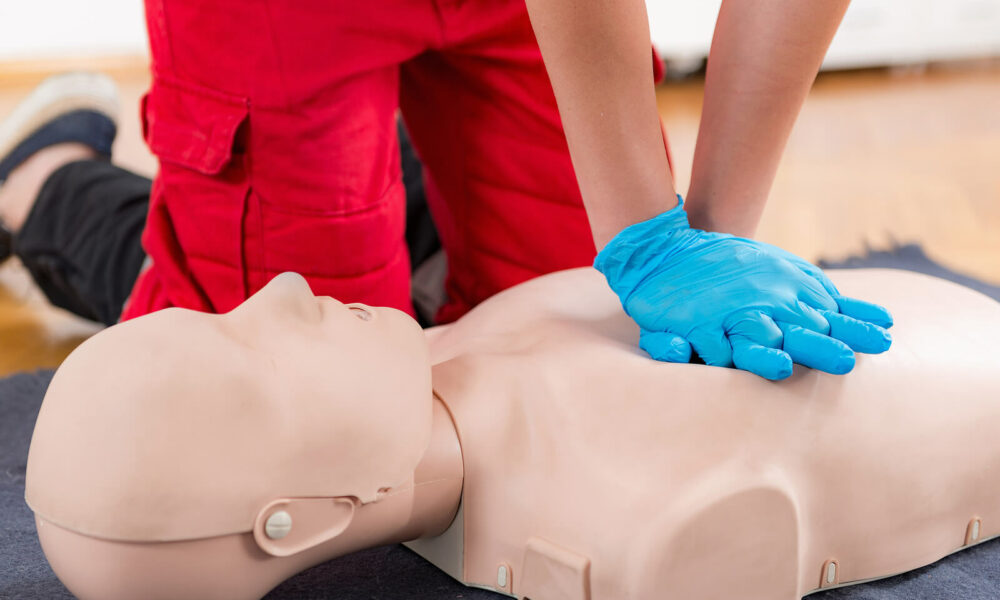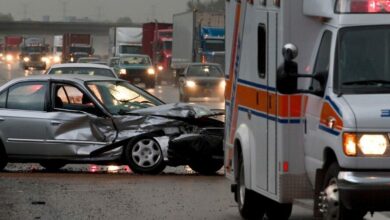First Aid, CPR, and AED: Essential Life-Saving Skills Everyone Should Know

Emergencies can happen at any moment, and knowing how to respond swiftly and effectively can mean the difference between life and death. First Aid, Cardiopulmonary Resuscitation (CPR), and Automated External Defibrillator (AED) use are crucial skills that equip people to handle such situations confidently. These practices are designed to provide immediate care until professional medical help arrives, increasing the chances of survival and recovery for those experiencing medical emergencies. In this article, we’ll explore the importance of First Aid, CPR, and AED, how they work, and the best practices for administering them.
First Aid: The Foundation of Emergency Care
First Aid refers to the immediate assistance given to an individual who is injured or in distress due to an illness. Its primary goal is to preserve life, prevent further injury, and promote recovery. It’s the foundation of emergency care and involves simple but effective techniques that anyone can learn.
The Basics of First Aid
- Assess the Situation: The first step in administering first aid is to assess the scene for safety. Make sure the environment is safe for both the injured person and yourself. This is crucial because rushing into an unsafe situation can result in more victims.
- Call for Help: If the situation is severe, call emergency services immediately. Dialing 911 (or the local emergency number) should be prioritized, especially in situations involving severe bleeding, unconsciousness, breathing difficulties, or possible poisoning.
- ABC—Airway, Breathing, Circulation:
- Airway: Make sure the person’s airway is open. Tilt their head back gently if necessary.
- Breathing: Check for breathing. If the person isn’t breathing, you’ll need to perform CPR.
- Circulation: Look for any severe bleeding and apply pressure to control it.
Common First Aid Techniques
- Bleeding Control: For bleeding, apply firm pressure to the wound using a clean cloth or bandage. If the bleeding is severe, you might need to use a tourniquet to stop the flow of blood.
- Burn Treatment: Run cool water over a burn for several minutes to alleviate pain and reduce damage. Avoid using ice directly on a burn, as it can cause more damage to the tissue.
- Choking: If someone is choking and cannot breathe, administer abdominal thrusts (Heimlich maneuver) to dislodge the object blocking their airway.
- Shock Management: If someone is in shock, keep them lying down with their legs elevated, unless there’s a specific injury preventing this. Cover them with a blanket to keep them warm and provide reassurance until help arrives.
CPR: Restoring Vital Breathing and Circulation
Cardiopulmonary Resuscitation (CPR) is a life-saving procedure used when someone’s heartbeat or breathing has stopped. CPR keeps oxygenated blood flowing to the brain and vital organs until professional medical treatment can restore normal heart and lung function. It’s particularly crucial in cases of cardiac arrest, where every second matters.
When to Use CPR
CPR is typically needed in scenarios where the person is unresponsive and not breathing, such as during a cardiac arrest, drowning, or electric shock. Immediate action is critical—delays of just a few minutes can drastically reduce the likelihood of survival.
How to Perform CPR
- Check Responsiveness: Shake the person gently and shout to see if they respond. If there is no response and no breathing or abnormal gasping, call for emergency services or instruct someone else to do so.
- Chest Compressions: Begin chest compressions:
- Place the heel of one hand in the center of the chest, and place the other hand on top.
- Push hard and fast, at a rate of about 100-120 compressions per minute. Push down at least two inches deep for adults, allowing the chest to fully recoil between compressions.
- Rescue Breaths: After 30 chest compressions, give 2 rescue breaths:
- Tilt the person’s head back slightly, lift the chin, and pinch their nose shut.
- Place your mouth over theirs, forming a seal, and blow steadily into their mouth. Watch for the chest to rise.
- Continue the cycle of 30 compressions and 2 breaths until help arrives or the person begins to breathe on their own.
- Hands-Only CPR: If you are untrained or uncomfortable with giving rescue breaths, perform hands-only CPR. This involves continuous chest compressions without the rescue breaths. Hands-only CPR has been shown to be highly effective, especially in adult cardiac arrest cases.
CPR Training: A Crucial Skill for Saving Lives
CPR Training is an essential life-saving skill that equips individuals to respond effectively during cardiac emergencies. Cardiac arrest can happen suddenly, and immediate intervention with CPR can double or even triple a victim’s chances of survival before professional help arrives. Learning CPR helps you recognize emergencies, perform effective chest compressions, and provide rescue breaths, ensuring oxygen continues to flow to vital organs. This training empowers everyday people—friends, family, coworkers—to take swift action, potentially saving lives. By learning CPR, you become a vital link in the chain of survival during a medical crisis.
AED: Jumpstarting the Heart
An Automated External Defibrillator (AED) is a portable electronic device designed to diagnose and treat sudden cardiac arrest through defibrillation. Sudden cardiac arrest occurs when the heart suddenly and unexpectedly stops beating effectively, often due to arrhythmias. An AED can restore the heart’s normal rhythm by delivering an electric shock, significantly improving the chance of survival.
When and How to Use an AED
AEDs are intended to be used alongside CPR in cases of sudden cardiac arrest. They are designed for simplicity so that even those with minimal training can use them effectively. Most AEDs come with verbal and visual prompts that guide the user through each step.
- Turn on the AED: Open the AED and turn it on. The device will start giving verbal instructions.
- Attach the Pads: Expose the person’s chest and attach the electrode pads according to the instructions on the AED. One pad should be placed on the upper right side of the chest, and the other on the lower left side.
- Analyze the Rhythm: The AED will automatically analyze the heart rhythm and determine whether a shock is needed. Ensure no one is touching the person while the AED is analyzing.
- Deliver the Shock: If the AED advises a shock, ensure everyone is clear of the individual and press the “shock” button. The AED will then administer an electric shock to help restart the heart.
- Resume CPR: After the shock is delivered, or if no shock is advised, continue CPR until emergency medical help arrives or the person shows signs of life.
The Importance of Training and Practice
While first aid, CPR, and AED skills can all be learned in a classroom setting, practice is essential to ensure proficiency in real-life situations. Many community centers, hospitals, and organizations like the American Red Cross or the American Heart Association (AHA) offer training courses that teach these techniques in a hands-on environment.
First Aid and CPR Courses typically include:
- How to assess emergencies.
- Hands-on CPR practice with dummies to learn chest compression techniques.
- Practice with an AED device to familiarize yourself with its use.
These courses are invaluable because they offer the opportunity to perform these skills under professional guidance, which can boost confidence and efficiency when faced with real-life emergencies.
Why Learning First Aid, CPR, and AED is Crucial
- Increase Survival Chances: Immediate CPR and AED intervention can more than double a victim’s chances of survival after sudden cardiac arrest. The critical period for resuscitation is often within the first few minutes, long before emergency responders can arrive.
- Be Prepared: Emergencies can happen anywhere—at home, in the workplace, at public events, or even on vacation. Knowing how to administer first aid, perform CPR, or use an AED can empower you to take action when seconds count.
- Prevent Further Injury: First aid not only helps keep someone alive but also prevents their condition from worsening. For example, keeping a broken limb immobilized can prevent further damage before professional medical help arrives.
- Build Community Confidence: When more people in the community are trained in first aid, CPR, and AED use, there is a greater collective ability to respond to emergencies. This makes communities safer overall.
Final Thoughts
First aid, CPR, and AED are life-saving skills that everyone should learn. These techniques not only make a critical difference in emergencies but also equip individuals to act confidently during crises. The knowledge of how to administer basic first aid, perform CPR, and use an AED can turn a bystander into a first responder, improving survival rates and making our communities safer.
While reading about these skills is an essential first step, practice is crucial. Consider signing up for a first aid, CPR, and AED course to learn these techniques in a hands-on environment. Remember, being prepared is the best way to ensure that, when the unexpected happens, you can make a difference in saving a life.





